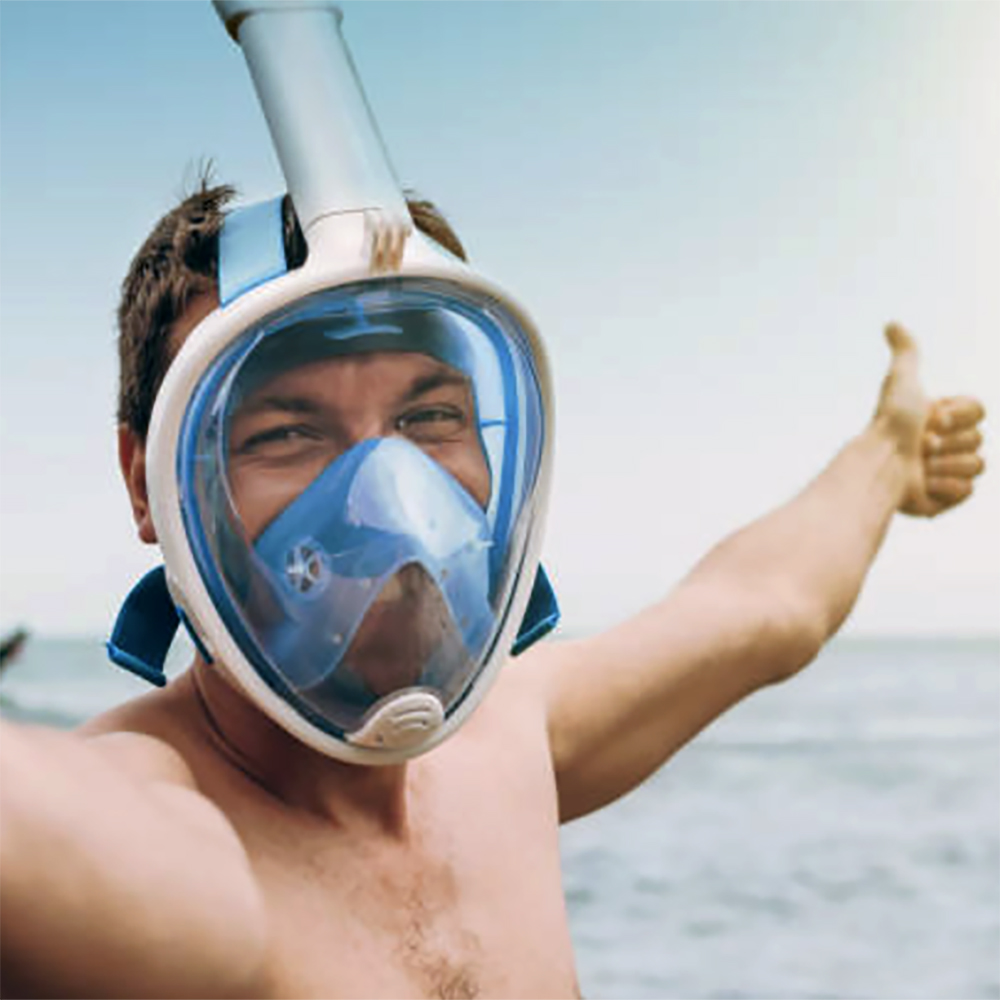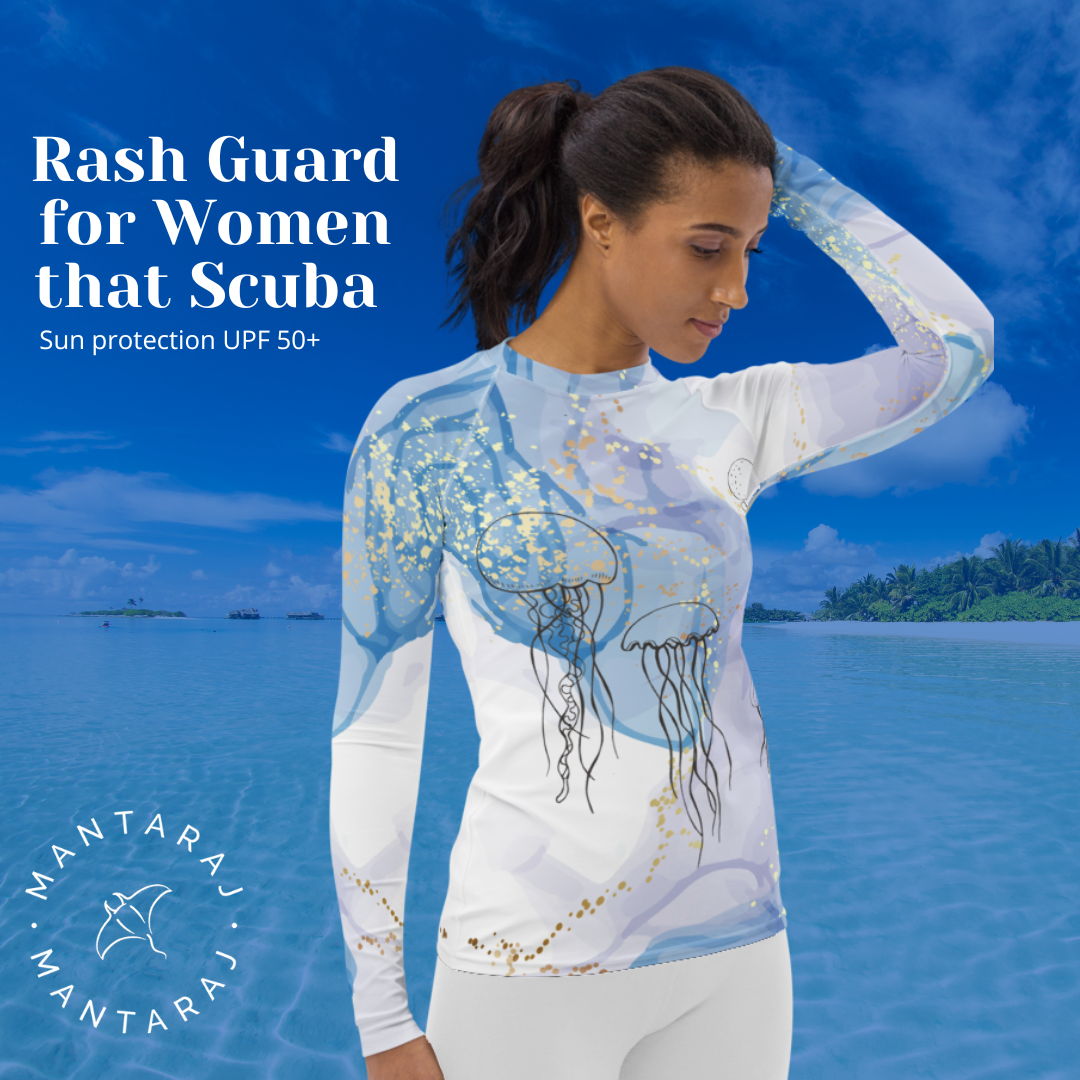In this article we compare Full-Face versus regular dive masks. Diving and snorkeling are exhilarating water activities that allow us to explore the underwater world and witness its mesmerizing beauty. To fully enjoy these experiences, having the right equipment is crucial. When it comes to masks, there are two main options: full-face masks and regular masks. In this article, we will compare and contrast these two types of masks, highlighting their features, advantages, and considerations.
Understanding Full-Face Masks
Diving and snorkeling allow us to immerse ourselves in the fascinating underwater realm, filled with vibrant marine life and breathtaking scenery. Whether you’re a beginner or an experienced enthusiast, having a reliable mask is essential for a comfortable and enjoyable underwater experience. Let’s explore the differences between full-face masks and regular masks to help you make an informed choice.
Full-face masks are innovative designs that cover the entire face, providing a clear viewing area for the eyes and nose. These masks have a built-in snorkel on the top, allowing users to breathe naturally without the need for a separate mouthpiece. The design aims to provide a more immersive and comfortable experience, especially for beginners and those who prefer a wider field of view.
The Benefits of Full-Face Masks
Full-face masks offer several advantages over regular masks:
Enhanced Field of View and Visibility
The large viewing area of a full-face mask provides an expansive field of view, allowing divers and snorkelers to take in the beauty of the underwater world with minimal obstructions. This feature is particularly beneficial for underwater photography enthusiasts who need a broader perspective.
Integrated Snorkel System
One of the key advantages of full-face masks is the integrated snorkel system. With the snorkel positioned above the water surface, users can breathe naturally without needing to submerge their mouths. This design eliminates the discomfort of biting down on a traditional snorkel mouthpiece.
Reduced Fogging and Leaking
Full-face masks often feature anti-fogging technology and improved sealing mechanisms. These advancements minimize fogging issues and prevent water from entering the mask, ensuring a clear and leak-free experience throughout your dive or snorkeling session.
Limitations of Full-Face Masks
While full-face masks offer various benefits, it’s essential to consider their limitations:
Buoyancy and Water Pressure
Due to their larger size and increased volume, full-face masks can create buoyancy and resistance underwater. This aspect may require users to adjust their diving or snorkeling techniques to maintain proper buoyancy control.
Limited Accessibility to Nose
Some full-face masks restrict direct access to the nose, making it challenging to equalize pressure during dives. This limitation can be problematic for experienced divers who are accustomed to equalizing pressure using their nose.
Bulkiness and Weight
Full-face masks are generally bulkier and heavier than regular masks. This aspect may affect portability, especially when traveling to different diving locations.
Introducing Regular Dive Masks
Regular dive masks, also known as half-face masks, are the traditional and widely used option in the diving community. These masks cover the eyes and nose, with a separate mouthpiece attached for breathing.
Advantages of Regular Masks
Regular masks offer their own set of advantages:
Simplicity and Familiarity
Regular masks have been used for decades and are familiar to most divers and snorkelers. Their simple design, with a separate mouthpiece, makes them easy to use and maintain.
Better Fit and Comfort
Regular masks come in various sizes and shapes, allowing users to find the perfect fit for their face. This customizable feature ensures a comfortable and secure fit, minimizing water leakage and enhancing the overall diving or snorkeling experience.
Ease of Equalization
With regular masks, divers can easily pinch their nose and equalize pressure when descending. This accessibility is particularly beneficial for experienced divers who frequently dive to deeper depths.
Drawbacks of Regular Masks
Regular masks also have a few drawbacks to consider:
Limited Field of View
Compared to full-face masks, regular masks offer a narrower field of view, potentially limiting your visual perception underwater. However, this can vary depending on the specific mask design.
Potential Jaw Fatigue
The separate mouthpiece in regular masks requires users to hold it securely between their teeth. Prolonged use of the mouthpiece can lead to jaw fatigue, especially during longer dives or snorkeling sessions.
Increased Fogging and Leaking
Regular masks may be more prone to fogging issues and water leakage compared to full-face masks. However, these problems can be mitigated with proper maintenance and anti-fog treatments.
Factors to Consider When Choosing a Mask
- Fit and Comfort: Ensure the mask fits securely and feels comfortable on your face.
- Field of View: Decide whether a wider field of view or a more traditional perspective is preferable for your diving or snorkeling activities.
- Equalization: If you frequently dive to deeper depths, choose a mask that allows easy equalization.
- Purpose: Consider whether the mask will be primarily used for snorkeling, recreational diving, or professional diving.
- Maintenance: Evaluate the maintenance requirements of the mask, including cleaning, storage, and replacement parts.
Safety Considerations for Diving and Snorkeling
- Regardless of the mask type you choose, prioritize safety when engaging in diving or snorkeling activities. Remember the following safety guidelines:
- Receive proper training and certification before attempting scuba diving.
- Snorkel in designated areas and follow local regulations.
- Check weather conditions and water visibility before diving or snorkeling.
- Always dive or snorkel with a buddy for increased safety.
- Regularly inspect and maintain your mask and other diving equipment.
Maintenance and Care of Diving and Snorkeling Masks
- To ensure the longevity of your diving or snorkeling mask, follow these maintenance tips:
- Rinse the mask with freshwater after each use to remove saltwater and debris.
- Use a mild detergent to clean the mask, avoiding abrasive materials that could scratch the lens.
- Store the mask in a protective case or pouch to prevent damage.
- Inspect the mask regularly for signs of wear or damage, such as cracks, degraded straps, or loose fittings.
- Replace worn-out parts or the entire mask as needed.
Personal Experience: Full-Face versus regular dive masks
As an avid diver with years of experience, I have had the opportunity to try both full-face masks and regular masks. While full-face masks provide a captivating field of view and eliminate the need for a separate snorkel, I personally prefer regular masks for their simplicity, comfort, and ease of equalization. The familiarity and versatility of regular masks make them a reliable choice for various diving conditions.
Ultimately, the choice between a full-face mask and a regular mask depends on your personal preferences, diving or snorkeling goals, and comfort level. Consider the advantages and limitations outlined in this article, and select the mask that aligns best with your specific requirements.
Frequently Asked Questions (FAQs)
FAQ 1: Can I wear glasses with a full-face mask?
No, full-face masks are not compatible with glasses. If you require visual correction, consider using contact lenses or investing in a mask with prescription lenses.
FAQ 2: Are full-face masks suitable for professional divers?
Full-face masks are generally more suitable for recreational diving and snorkeling rather than professional diving. Professional divers often require specialized equipment and training specific to their underwater tasks.
FAQ 3: Do regular masks provide better visibility?
Regular masks may have a narrower field of view compared to full-face masks. However, the specific design and lens quality can greatly impact visibility. Choose a mask with high-quality lenses for optimal clarity underwater.
FAQ 4: How often should I replace my mask’s straps?
Mask straps may wear out over time due to exposure to sunlight, saltwater, and general use. It’s advisable to replace the straps every one to two years or when signs of wear become evident.
FAQ 5: Can I use a full-face mask for free diving?
Full-face masks are not recommended for free diving or breath-hold diving. Free diving requires specific training and techniques for equalization, which may not be feasible with a full-face mask.


